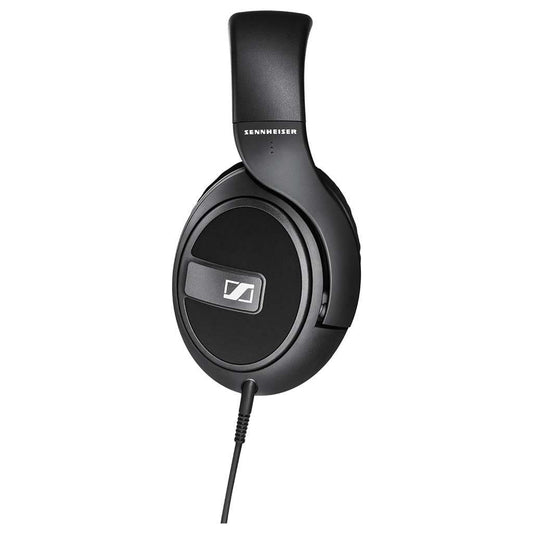Sennheiser HD 569: Sennheiser's Best Kept Secret?
A headphone being old and scarcely mentioned doesn’t automatically mean it's bad. In fact, HD 569 might be my favorite mid-fi closed back headphone. Why is that, and more importantly, why does nobody talk about this headphone? Join me as I try a headphone from seven years ago in the hopes of finding an undiscovered gem.
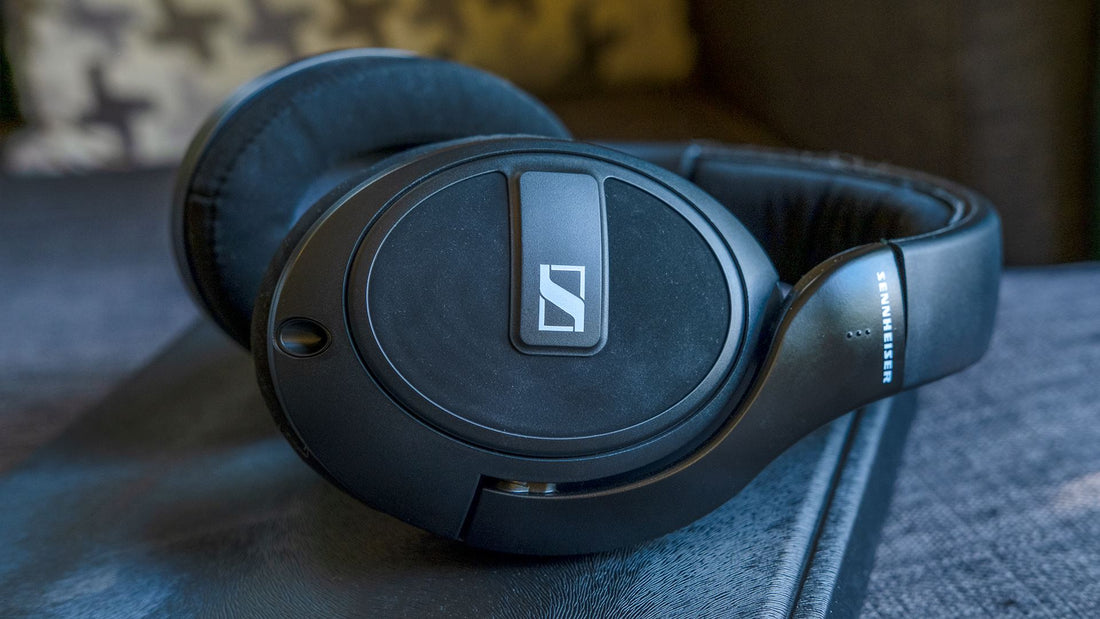
Before we talk about the HD 569, I’d like to provide a bit of context to where it sits in the market.
I’m a huge headphone nerd, so of course I have my own “Mount Rushmore of headphones” containing what I believe to be the four most iconic and important audiophile headphones of all time. On it are the Audeze LCD-4, the Focal Utopia, and two offerings from Sennheiser: the HD 650 and the HD 800.
As the only brand with two spots on the list secured, one would assume that Sennheiser is “the best” audiophile headphone company, and I think there’s a legitimate argument for this. Not only do they make two or three of the best headphones of all time, they are one of the brands most concerned with build quality, comfort, and longevity, and even their most expensive design is less than half the MSRP of the other two flagship headphones on the list.
Despite Sennheiser’s hallowed reputation in the audiophile hobby, they don’t really have the same sterling reputation when it comes to their closed back headphones. For example, the HD 820 hasn’t garnered the same level of enduring respect that the HD 800S has. The new HD 620S is getting a lot of buzz recently, but I’ve yet to get hands on one—though I should very soon, so stay tuned for that. Other than HD 820S and HD 620S, Sennheiser’s less expensive consumer closed backs like the HD 598Cs and HD 569 don’t really get much (or any) mention in the spaces I frequent.
However, a headphone being scarcely mentioned doesn’t automatically mean it’s bad. In fact, I think HD 569 might be my favorite closed back headphone under $900. Why? Let’s talk about it.
What we like
- Some of the smoothest treble of any headphone I’ve ever put on my head
- Build quality, replaceability of parts is typical Sennheiser excellence
- Bass and midrange response are reasonable, especially when compared to other closed back headphones
What we don’t like
Sennheiser HD 569 Headphones
Packaging, Build, Design, Accessories and Ergonomics
The current HD 569 packaging actually feels more premium than the current 6 series packaging. HD 569 comes in a thick, sturdy, two-piece cardboard box with nicely printed pictures/labeling on it. Whereas the more expensive 6 series comes in a thinner, single-piece folded cardboard box that neither looks nor feels as nice as the HD 569 box. While I don’t really have huge issues with the current 6 series packaging, the unboxing experience for the HD 569 was surprisingly good considering the cost difference.
However, one caveat worth mentioning is that HD 569 has the same problem the AKG K371 had in its early runs: There isn’t adequate protection on the earpads, which means that the pads can arrive wrinkled or smushed. I’d recommend Sennheiser do what AKG did and manufacture thin plastic sleeves to go over the pads to prevent them from crushing in transit.
The accessories included with HD 569 are pretty decent—if scarce—for the price too. Included are multiple cables: a 1.2m 3.5mm-terminated TRS cable with an inline microphone, and a 3m 6.3mm-terminated TRS cable. Both end with a proprietary 2.5mm threaded single-entry cable for the headphone side. While they’re not the most ergonomic cables out there, they’re reasonable lengths, aren’t too microphonic or “sticky,” and disappear pretty easily with normal use.
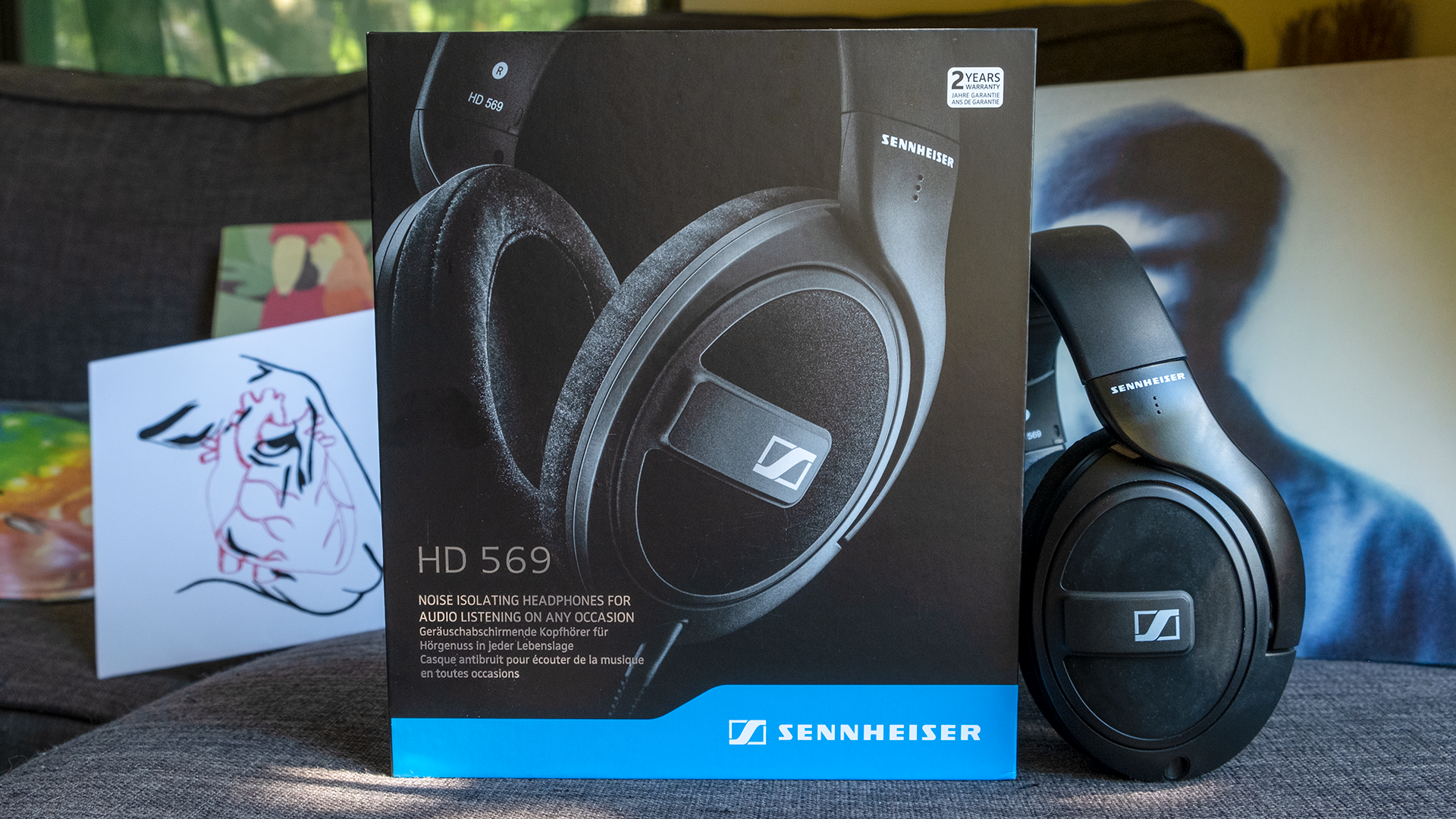
In terms of build and ergonomics, HD 569 is near-identical to the other 5 series offerings, which is both a good thing and a bad thing. The good part is that the headphone will likely last a long time without any glaring build defects, as is typical of this series. The bad part is that this chassis has pretty middling comfort. Despite being an extremely light pair of headphones, the HD 569 has pretty intense clamp force which definitely hurts its comfort potential a bit. The earpads themselves are made of a very soft suede-like material that actually feels great on my face. They’re not especially stiff, and they crush easily. Unfortunately, the 5-series chassis has that chunky protrusion in the rear of the inner ear cup as a result of the headband yokes needing space to exist. Additionally, the headband allows a little less cup swivel than I’d like, which may diminish how many potentially comfortable positions a user could get. While neither of these makes them unwearable—in fact I’d actually say HD 569 is among the more comfortable closed back headphones you can get in this range—there’s definitely room for improvement here.
Finally, design. I’d like to paraphrase something a user in our Discord server named “golem” said about HD 569, because it was a really good point. He said even though they’d likely enjoy HD 569’s sound more than its competition, they’d never choose to wear it outside because of the look. In case it wasn’t obvious, I agree: Sennheiser’s approach to aesthetics is usually function over form, which is fine for an audiophile open back headphone, but I think HD 569 would have more utility as a closed back headphone if it looked less austere and its curvature were modernized a bit.
Overall, there’s not a ton new here ergonomically or aesthetically from the rest of the 5 series. Even though HD 569 has a few issues that people should be aware of before buying, it’s still a more complete build, comfort, and accessory package than a lot of its competition in this price range. Now let’s move on to sound.
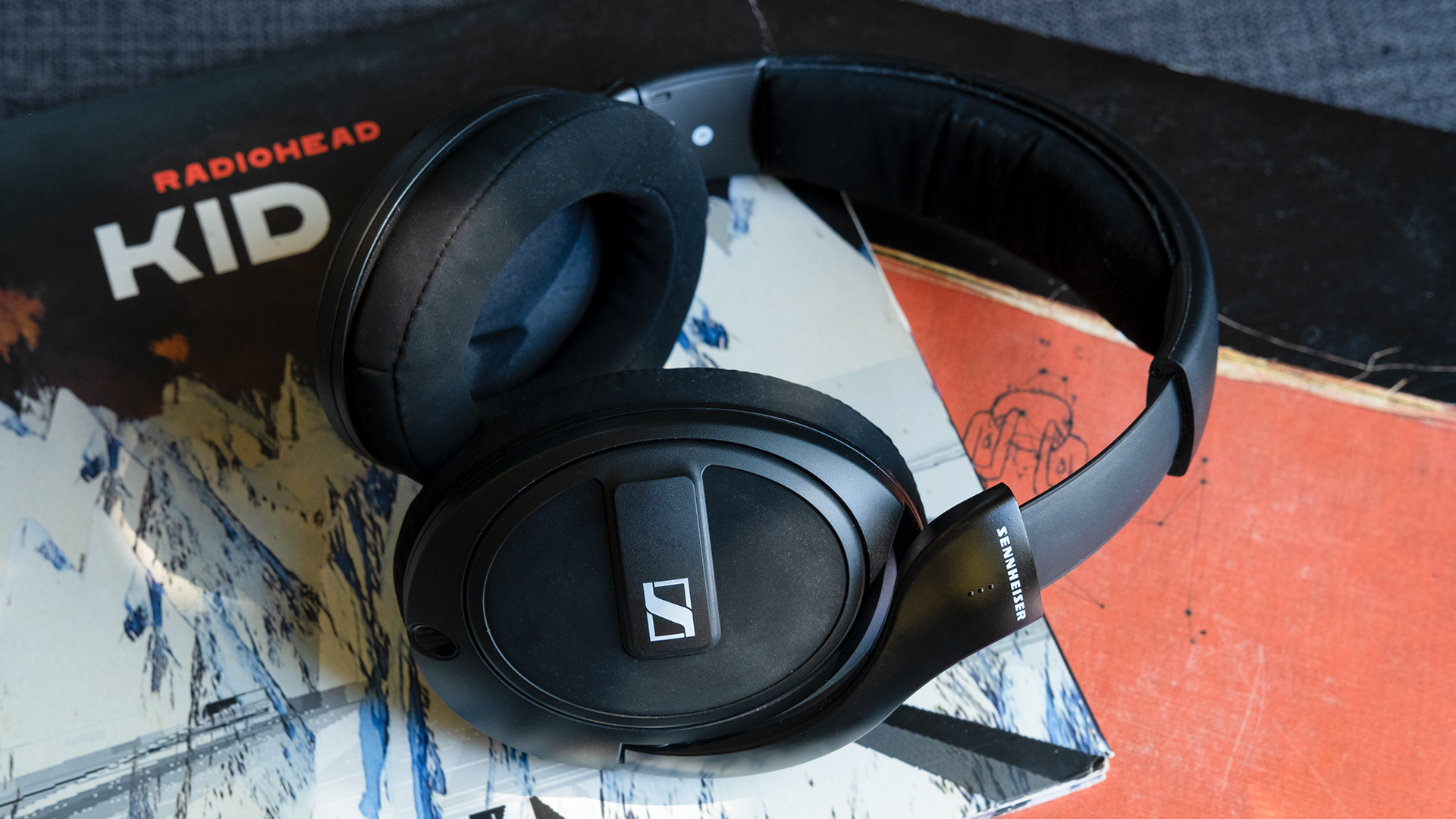
Frequency Response and Tonality
Above is the HD 569 measured on my clone 43AG, using clone KB006x pinnae and a clone 711 coupler. I strongly encourage not reading too deeply into the measurement above 3 kHz.
Bass
I encourage readers to look at the measurements labeled “Leak Test” above, as those are more likely to be a realistic result on the head of a human. A perfect seal is necessary for bass extension in a headphone, and my long and somewhat curly hair definitely causes a little bit of leak, and therefore some bass loss under 50 Hz or so. Even in the perfectly-seated measurement on my completely flat-sided measurement rig, there seems to be some bass roll off though, so those who want bottomless sub-bass would likely be better served looking at another headphone entirely.
It’s not that the bass is terrible here, but it certainly isn’t anything special in terms of tuning. It’s on the bulbous and bloomy side for sure, causing kick drums to sound a little too rounded and boomy and causing lower male vocals to be a little bit imposing, while also a bit thin due to the cut directly above the bump around 150 Hz. However, even if this peak/dip behavior in the upper bass has a bit too much distance between its extremes, it’s roughly in the right place and has a few positives as well.
For one, the placement is such that snare drums in particular always have a bit more fundamental emphasis for thickness, while having a cut right in the area where their first/second harmonic would be. Those first few harmonics can often cause boxiness on snares that aren’t recorded and mixed absolutely perfectly, so having a gentle cut there while emphasizing the fundamental below helps even poorly recorded snare drums sound more correct than not.
Overall though, it’s definitely a bit too bassy for me, but not in a way that screams incoherent. People are generally going to expect a bass boost in closed-back headphones, and while HD 569 delivers maybe a bit too much bass, I can’t say it ever ruined the music for me. Maybe I’m just a bit more tolerant of extra bass, but I think it makes a decent amount of sense given the rest of the tuning here.
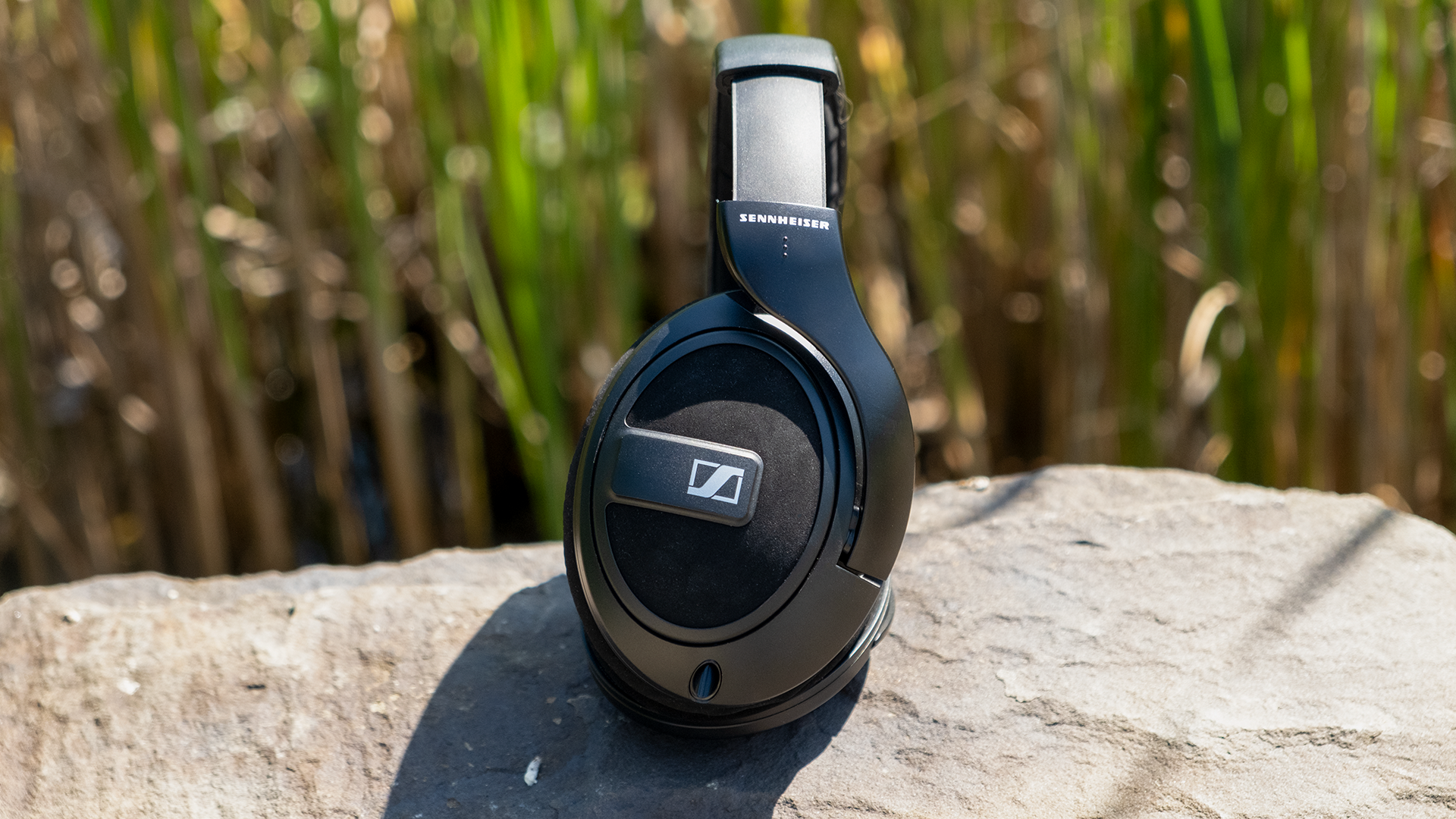
Midrange
Brief tangent: The midrange of this headphone is a little difficult to unpack, and not because the headphone itself sounds wrong or right. My measurements happen to disagree in the upper midrange with a few of the older measurements of the HD 569 I’ve seen out there, both from Oratory1990—who you might know for his extensive list of headphone EQ profiles—and Tyll of InnerFidelity fame. Typically my rig would show less upper midrange than Tyll’s, so my measurement having more upper midrange between 1-3 kHz is curious. It could be unit variation, it could be placement variation, it could be pad wear, it could be a silent revision, or some random combination of all of these things.
This is actually a pretty good example of one of the problems with closed back headphones: because their results can vary widely when placed on different heads, it’s hard to make (hah) heads-or-tails of a deviation or know why it’s occurring without multiple samples to test.
Thankfully, my unit seems to match a friend of mine’s recently-purchased unit very well—after both headphones have been calibrated to their rig’s respective DF HRTFs, of course. So I’m going to evaluate the headphone as I hear it, and hopefully these impressions are still relevant to other units people would be buying in 2024. Tangent over, back to the review!
The midrange sounds right about where I think most would want it in an over-ear headphone, though it has the typical closed back scoop around 300 Hz, and as a result the midrange is a touch thin for my taste. The little bump around 3.4 kHz is definitely present on my head, and the scoop in addition to this bump are probably the main issues I have with HD 569. This midrange can cause vocals to sound a little papery or gritty and cause snare drums to sound a bit too “hard” in their attack, almost like the top head itself is pulled too tight or made of stone.
For the midrange here my main complaint is that I’d have liked a slightly warmer tilt. I find most closed back headphones to target a Harman-like midrange, which isn’t a bad thing on its own. In fact, that’s why I think a lot of people will be okay with the midrange here! But it’s a fine line: I find when the low-midrange is dipped lower than Harman, the rest of the midrange being Harman-compliant can make vocals, guitars, and pianos a bit too strained or tense sounding.
Overall, HD 569 delivers a reasonable, if marginally thin midrange. While not being perfect in one or two ways, the problems in the midrange never really made me unable to enjoy the headphone. That can’t be said about a lot of the popular competition in the “studio closed-back” market segment from Audio Technica, Beyerdynamic, Shure, or Sony which generally all have much bigger issues here.
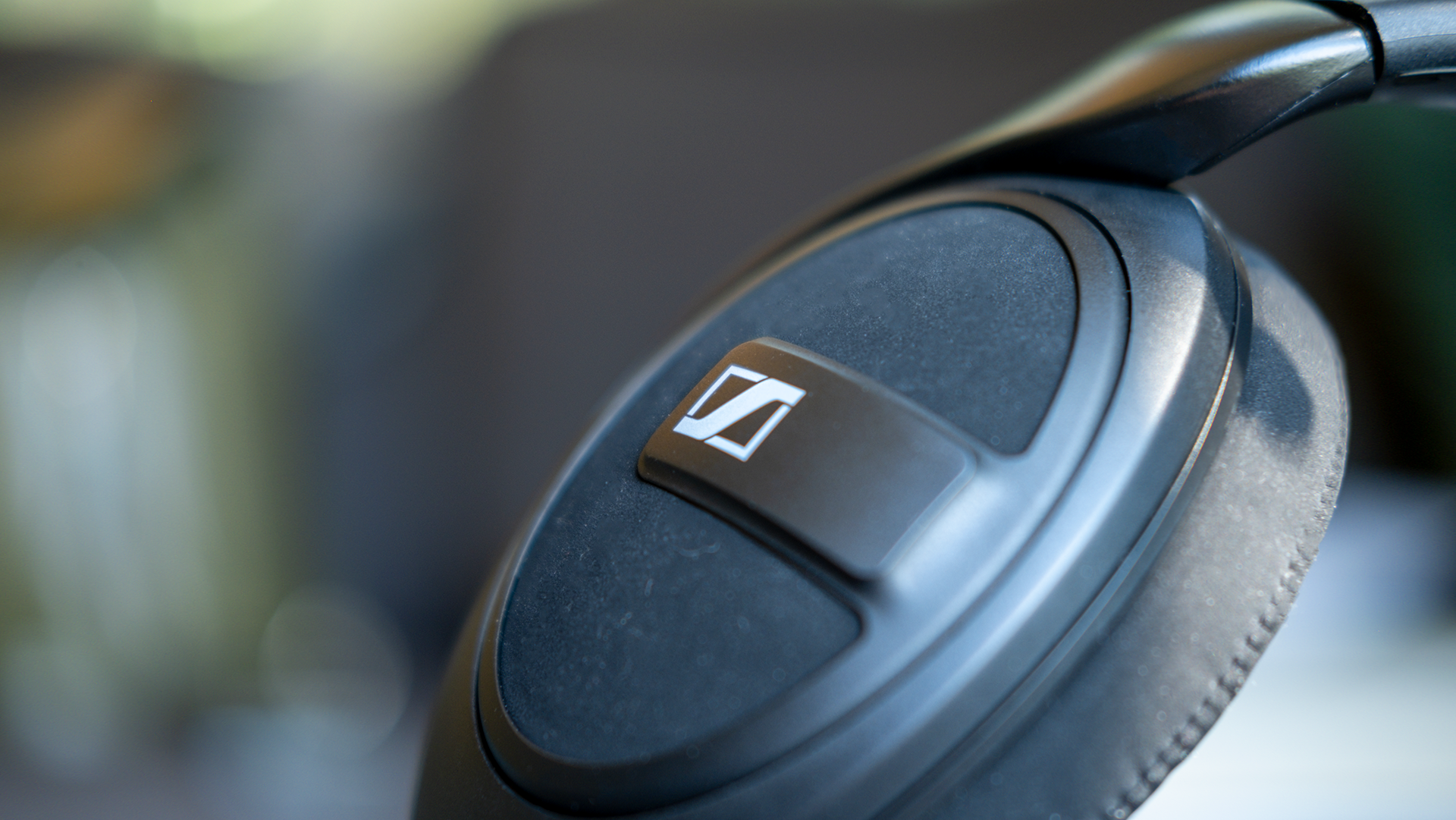
Treble
I am happy to report that HD 569 is among the best headphones I’ve ever put on my extremely treble-sensitive head. To that end, it’s important to note how insanely personal treble response can be. Not only do we all have different preferences, and not only do we all have different HRTFs, but headphones literally respond differently depending on the head they’re placed on. Check out my article on Diffuse Field to see what I mean. So while HD 569’s treble is near-flawless on my head, there is absolutely no guarantee that it will be on anyone else’s head, and it isn’t only HRTF and preference that is to blame for this.
Even though there are exceptional parts of the treble here, there’s still a slight scratchiness or dryness that sounds like an elevation somewhere in the low or mid-treble. Getting more specific, I get a little bit of unevenness in the 5-9 kHz area that compounds with the 3.5 kHz bump mentioned above and makes things sound papery at times. But even so, HD 569 is still one of the few closed-back headphones that doesn’t have a large peak in the 10-12 kHz area or above that makes EQ an absolute necessity for long-term use.
Cymbals of all types but especially hi-hats sound refreshingly balanced between stick click, ring, hash, and air. Vocal sibilance is curtailed almost entirely, and percussion instruments with high overtones like chimes and glockenspiel are deftly balanced between their tinkly bell-like attack and their ringing fundamentals in the midrange.
While again, I can’t recommend this headphone solely based on how excellent the treble is on my head, when looking at results across different rigs the picture painted is that of an overall “dark” headphone, which isn’t really common when one considers the options out there. Most closed-back headphones—in fact, most headphones—usually have some level of extra treble above 6 kHz vs. what even the rigs would call “neutral” if they could speak. So if you’re like me and looking for a closed back headphone that is less likely to have boosted treble, HD 569 has been very pleasant to review due to this relaxed approach to treble.
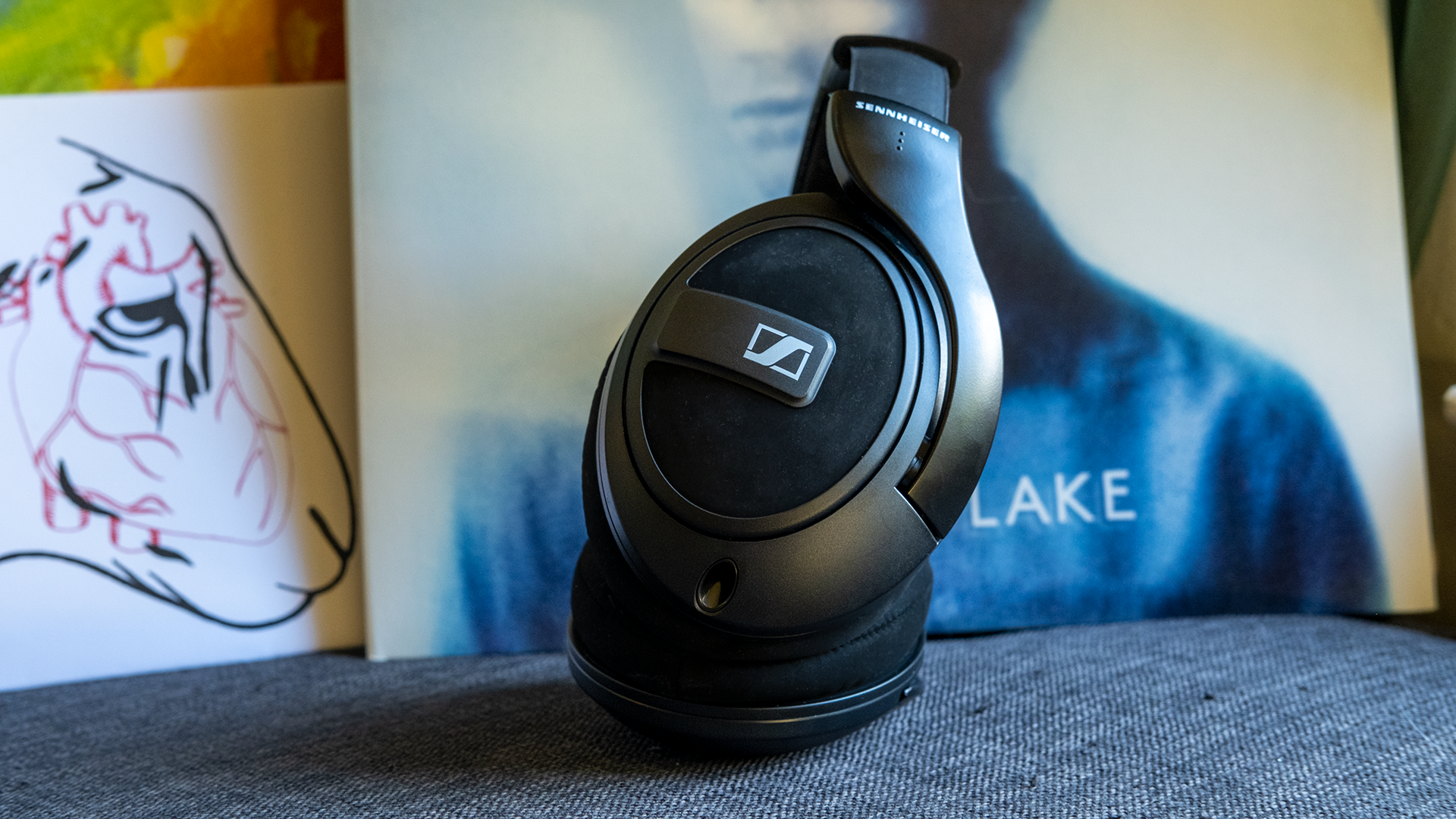
Subjective Impressions
Simply put, I don’t think HD 569 does anything all that special when it comes to subjective qualia.
Dynamics are a bit flattened and homogenized, and I think the excess bass and slightly lean midrange is to blame here. Kick drum hits have a simultaneously quick and concrete attack while not feeling too spiky or harsh, but it also feels like they bloom just a bit too much on certain recordings. It's most noticeable on recordings with acoustic instruments that extend into the upper bass like acoustic guitar, piano, snare drum, kick drum, etc. There’s an incoherence between bass and midrange causing things to sound simultaneously slow and fast at the same time. Unfortunately this is a common thing with closed backs.
I find the sense of spaciousness to be pretty middling as well, rather similar to the HD 560S. None of the sonic elements sound particularly “large” or “distant,” but they are placed with a slight sensation of “frontal” placement that other closed backs don’t always have. This could be due to Sennheiser’s E.A.R. technology—which is essentially just them slightly tilting the driver in order to give it a more frontal angle of incidence relative to the ear. I’ve noticed driver placement having an effect on this sensation prior, but I confess I’ve never seen or done any proper testing to conclude if it’s really the driver orientation that’s causing this effect.
In terms of detail, I gather most people will find HD 569 to be a little poor in this regard, but I actually find it does rather well here. I think this largely has to do with the fact that its tuning does well to avoid any overt masking factors. While the bass is a little over-inflated, it doesn’t “bleed” into the midrange or occlude any higher pitched instruments/cues. The treble is also well-controlled such that the masking that I usually experience from upper treble frequencies is thankfully not present here, and as a result the upper midrange clarity here is exceptional (for me).
I rarely touch on timbre in my reviews because these days I regard timbre as a metric that only results from a misunderstanding of frequency response, but that being said… the timbre on these is pretty exceptional for me. The subjective correlation between the bass, midrange, and treble in terms of tonal coherence and “perceived time domain” performance is clearly a cut above most of the closed-back headphones I’ve heard, such that if I were shopping for closed headphones, I’d probably take this over most other options for this reason alone.
EQ
Thankfully I didn’t really need to EQ this headphone to enjoy it. However, if I had to do one thing to improve the performance, I’d be lowering the bass around 120 Hz, cutting the 3.4 kHz peak a bit, and raising the low midrange to accommodate the lost warmth from the bass cut. Something like the below preset should be a decent starting point:
Peak @ 155 Hz -5 dB Q: 1
Peak @ 315 Hz 5 dB Q: 1.6
Peak @ 3435 Hz -2 dB Q: 6
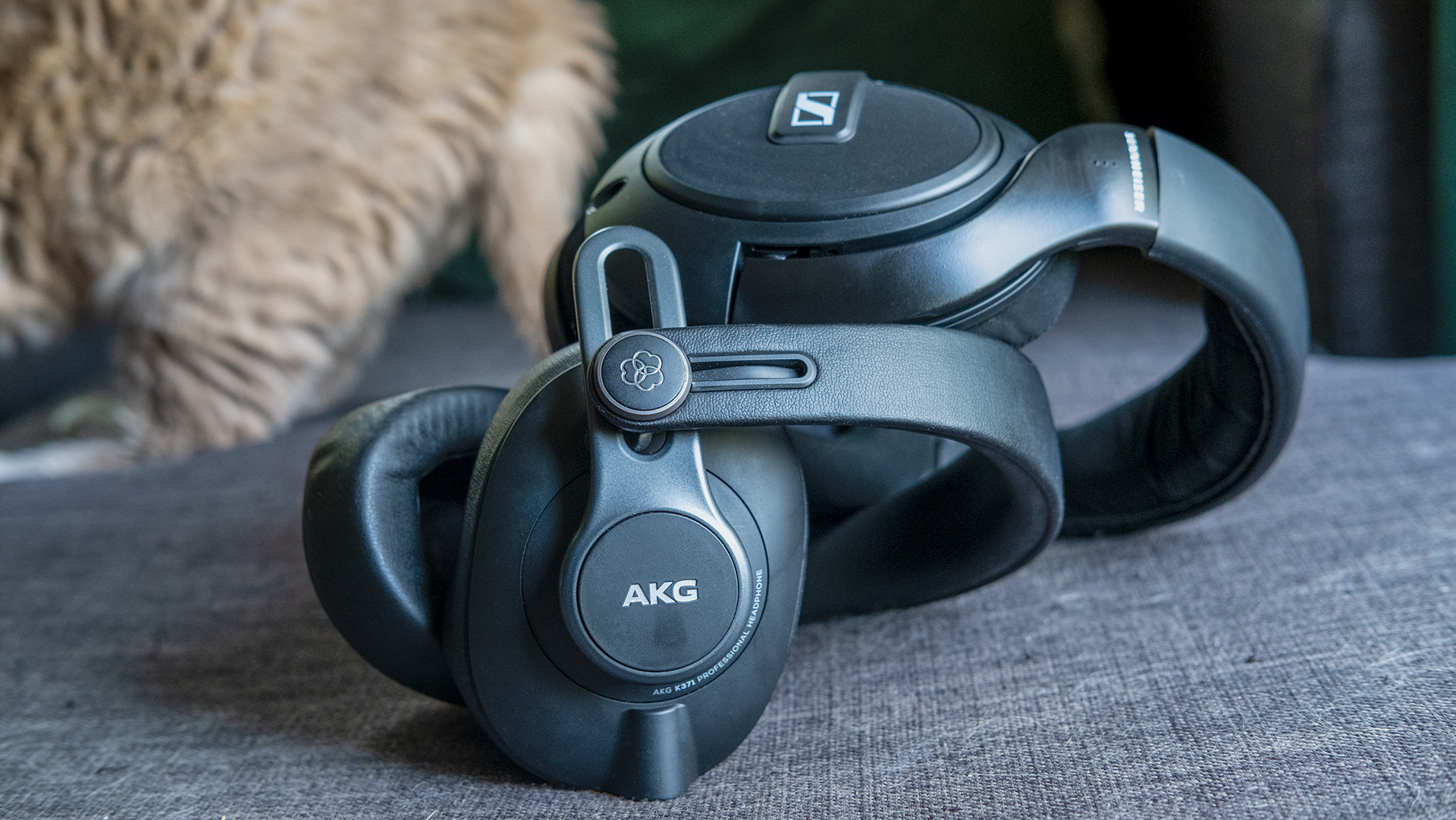
Sennheiser HD 569 vs. AKG K371
The K371 is the gatekeeper of this price range for closed-back headphones for a reason: its measured frequency response on our industry-standard measurement rigs is exceptionally balanced. However… there’s a problem with that approach that we don’t often talk about when recommending K371.
The K371’s headband and pad design is such that on-head results are exceedingly variable between placements and different heads. RTINGS has excellent measurements that show this phenomenon, and unfortunately it means that what measures “Harman” on the unrealistically well-sealing GRAS rigs like 43AG or 45CA, doesn’t sound that way for many people.
I get a significant leak on my head such that the rather large bass shelf on K371 measurements is near-entirely absent, which tilts the overall response of the headphone to be rather bright and unappealing. What HD 569 does well by comparison is ensure that even with a significant leak, the rest of the response is normal enough in the midrange and dark enough in the treble that it doesn’t sound quite as thin or strident sounding.
When I push the cups on my head, I can get K371 to sound pretty good, and I think I would prefer its bass and midrange if it sounded like this without manual intervention. The treble still sounds really rough in the mid-treble around 8 kHz on my head though, and this isn’t an area I usually have issues with. HD 569 sounds smoother up there, and fits me way better which results in a better bass performance on my head.
Additionally, instead of the insubstantial and flimsy build of the K371, the HD 569 feels rather more sturdy and structurally sound. HD 569 is also more comfortable, with thicker padding on the headband as well as slightly deeper earcups.
Overall, while K371 might be the “safe” option as far as frequency response as measured on a rig, with closed-backs we have to be careful about recommending something that’s bound to vary significantly based on whose head it’s placed on. K371 might be the option most people will be recommending in this price range, but I might actually end up recommending HD 569 over it just because of its benefits in build longevity, comfort, and after-sales parts availability. It also happens to sound better for me, but of course that may not hold true for everybody.

Why Review HD 569 So Late After Release?
I’ve had a lot of friends ask me “Why are you reviewing the HD 569? It’s old! No one around currently has anything nice to say about it, and that probably means it’s bad.”
I wish I could say HD 569 was a pleasant surprise, but actually it wasn’t a surprise at all. I chose to review this headphone precisely because of how it measured on the GRAS systems equipped with the KB50xx pinna. Measurements on this rig using its associated DF HRTF seem to agree very well with my impressions of most headphones above 8 kHz or so, and while this unit deviated in the midrange from what I expected, the bet I made on the treble ended up being a good one. It sounds roughly like what I expected, and works really well for me.
I want to be clear: audiophiles should not just look at one headphone measured on one head and assume what the sound will be like. However, when you’ve been around a while and have spent a long time listening to and criticizing headphones, spent a long time learning the idiosyncrasies of the measurement systems we use, and spent a long time learning how the measurements correlate to your own experiences… you can actually get pretty dang far solely using measurements if you know what to look for.
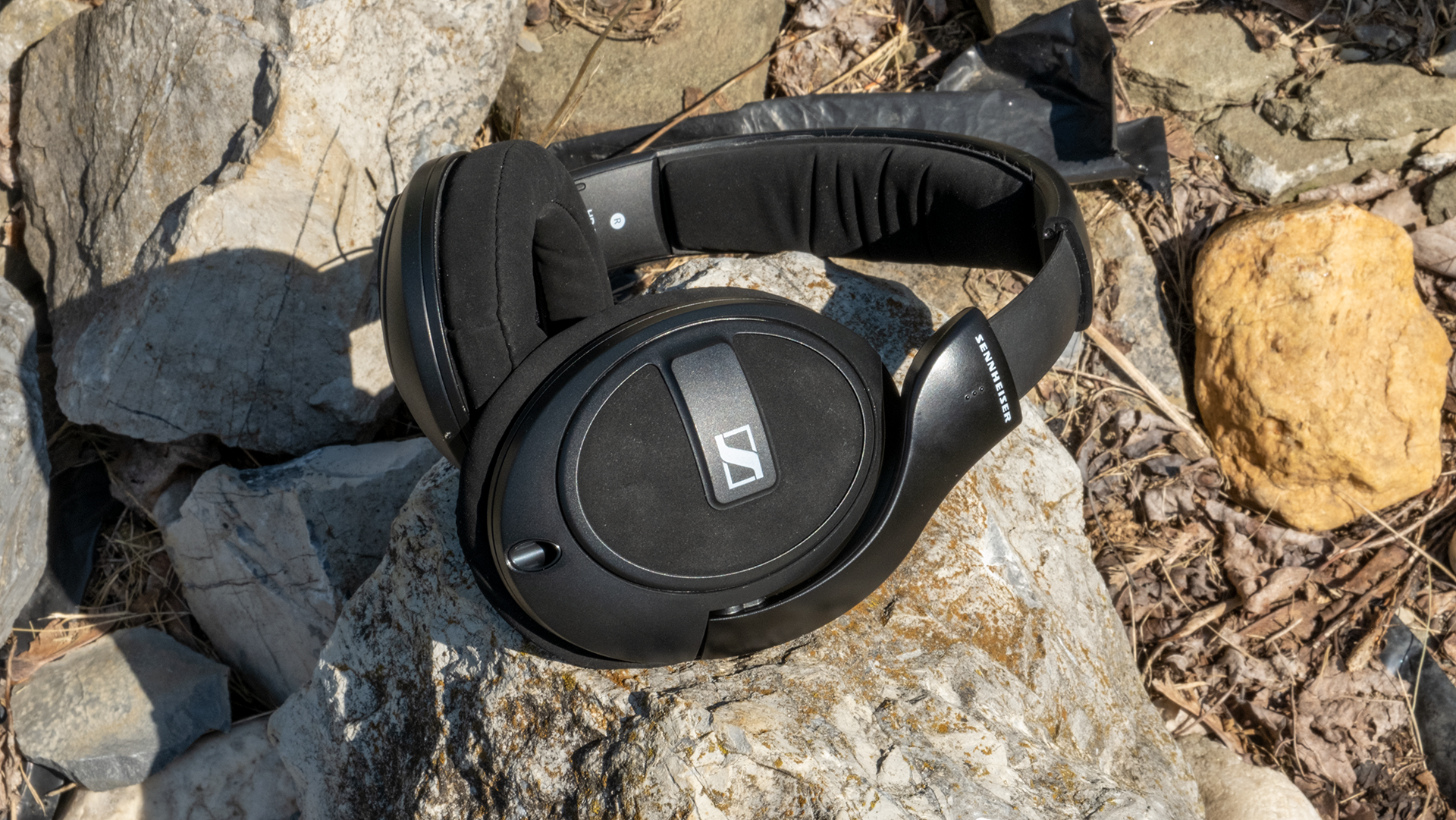
Conclusion
Closed backs are tough. The variability based on whose head it’s on is enough to make the prospect of writing a review of a closed-back headphone harder than an open-back one, but what usually makes it even harder is that most closed-back headphones are outright bad when it comes to sound quality.
However, I struggle to see any part of the equation of HD 569 that is outright bad. The comfort, build, and longevity prospects for HD 569 are roughly equal to or better than most of its competition in this price point. The bass and midrange are roughly in the ballpark of most of its closed-back competition, while its treble is nicely darkened such that it fills a hole in the market. Nothing else is tuned quite like the HD 569, and I think it deserves praise for being one of the more safely tuned options on the market.
While yes, it’s not exactly compliant with Harman’s target, the headphones that are Harman-compliant generally tend to have worse build and comfort and bigger issues with coupling to human heads, resulting in the sound being rather far from Harman for the end-user. I’m personally okay with recommending something that’s a little bit warmer than Harman if it means that the result people actually get isn’t as uncomfortable, poorly built or lacking-in-bass as most of the “safe” options today.
HD 569 is well-built and replacement pads are eminently available, typical of Sennheiser. It has a decent comfort profile, being both lightweight and having moderately deeper cups than most studio closed-back headphones. The sound quality is solid, and may even be outright great for those who desire a darker-than-average tuning like myself. Hell, I even think those who just want a darker headphone in general, regardless of being closed or open, might also want to give this one a shot. For those reasons, I’m happy to recommend HD 569 as an option for those who want an affordable option that has fewer deal breaking flaws than I usually find in closed back headphones.
If you have any questions or want to chat about this article, feel free to ping me in our Discord channel or start a discussion below on our forum, both places being where you can find me and a bunch of other headphone and IEM enthusiasts hanging out and talking about stuff like this. Thanks so much for reading. Until next time!
